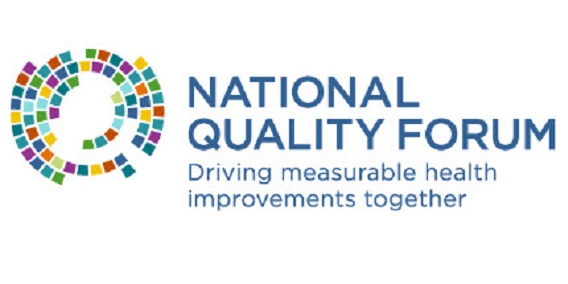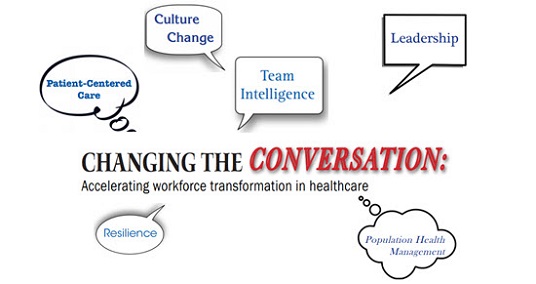A Roadmap for Promoting Health Equity & Eliminating Disparities: The Four I's for Health Equity
Despite overall improvements in public health and medicine, disparities in health and healthcare persist. In 2015, the Centers for Disease Control and Prevention reported significant health and healthcare disparities in leading causes of death. For example, African Americans are more likely to die prematurely from heart disease; the prevalence of heart disease is higher for individuals with lower incomes and lower educational attainment; and individuals with disabilities face disproportionately higher levels of health care need and cost. In addition, the 2016 National Healthcare Quality and Disparities report highlighted significant disparities in healthcare quality. Racial and ethnic minorities, individuals with disabilities, individuals who have low incomes, and individuals with other social risk factors are more likely to receive lower quality care. Eliminating these disparities has become the priority of the U.S. Department of Health and Human Services (HHS) and many other stakeholder groups.
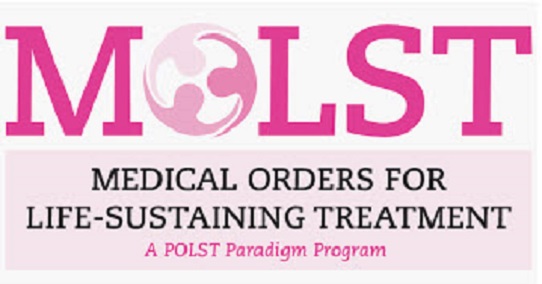 Massachusetts Medical Order for Life-Sustaining Treatment
Massachusetts Medical Order for Life-Sustaining Treatment
MOLST is a standardized medical order form for use by clinicians caring for patients with serious advancing illnesses.
Effective July 1, 2014 the MOLST Project will transition to the MA Department of Public Health.
The many tools and resources on their website will continue to be accessible to health care institutions and individuals who are implementing MOLST or who would like to have information about MOLST.
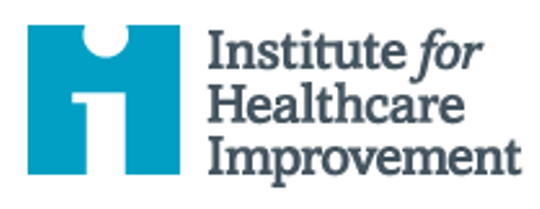 Root Cause Analysis (RCA2) : Improving Root Cause Analyses and Actions to Prevent Harm - National Patient Safety Foundation Report & Webinar
Root Cause Analysis (RCA2) : Improving Root Cause Analyses and Actions to Prevent Harm - National Patient Safety Foundation Report & Webinar
Root cause analysis (RCA) is a process widely used by health professionals to learn how and why errors occurred, but there have been inconsistencies in the success of these initiatives. With a grant from The Doctors Company Foundation, NPSF convened a panel of subject matter experts and stakeholders to examine best practices around RCAs and develop guidelines to help health professionals standardize the process and improve the way they investigate medical errors, adverse events, and near misses. Numerous organizations have endorsed the use of RCA2: Improving Root Cause Analyses and Actions to Prevent Harm as a valuable resource in efforts to create a more effective event analysis and improvement system.
Co-chairs of the panel that created the report, James Bagian, MD, PE, and Doug Bonacum, CSP, CPPS, discussed the NPSF report in a webcast on Wednesday, July 15. NPSF developed the report and provided this complimentary webcast through the generous support of The Doctors Company Foundation, July 15, 2015
The full report and links to the webinar recording can be found here.
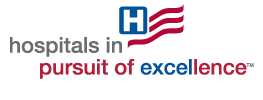
Equity of Care: A Toolkit for Eliminating Health Care Disparities
The partners of the National Call to Action to Eliminate Health Care Disparities are working to improve quality of care for all individuals by focusing on three core areas. To help you get started or complement your existing efforts, this Toolkit for Eliminating Health Care Disparities offers a framework for next steps paired with resources to guide your work.

The Healthy Living Center of Excellence
Founded and led by Elder Services of the Merrimack Valley and Hebrew SeniorLife, it is an innovative collaborative of more than 50 community and governmental organizations with a goal of improving health outcomes for adults through evidence-based programs. Along with our seven regional coalition partners, we offer community programs that promote health and prevent disease among adults with one or more chronic health conditions. Programs are held in community settings or within the healthcare delivery systems with the collaborative efforts of healthcare providers, healthcare plans, community-based organizations, government, foundations and for-profit partners. Visit our website for a description of each program, to access the statewide workshop calendar or to make a referral. You can also call 978-946-1211 for more information or to register for a workshop.
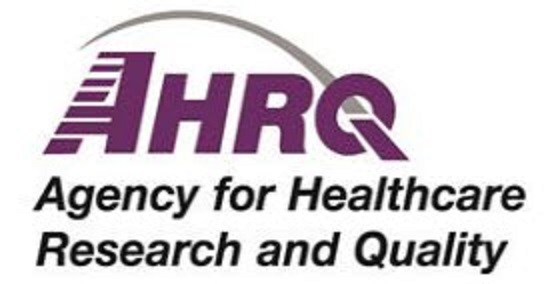 A Guide to Help Acute Care Facilities Expand Their Current Medicaid Readmission
A Guide to Help Acute Care Facilities Expand Their Current Medicaid Readmission
The new resource, titled Hospital Guide to Reducing Medicaid Readmissions, can help acute care facilities accomplish the following:
- Adapt or expand existing Medicaid readmission reduction efforts. It helps identify readmission risks, transitional care needs, and adapt best practices from proven strategies like AHRQ's Re-Engineered Discharge, the Institute for Healthcare Improvement's State Action on Avoidable Readmissions, and the Society of Hospital Medicine's Better Outcomes for Older Adults Safe Transitions to serve the transitional care requirements of Medicaid patients.
- Develop your Medicaid reduction strategy using the guide's roadmap featuring 13 customizable online tools. The tools can be downloaded individually here.
Comply with CMS' Conditions of Participation requirements for a standard, improved, and transitional care for all patients. National, state, and local data show high rates of non-obstetric Medicaid readmissions. - Develop partnerships across other settings of the healthcare continuum. The tool helps create an inventory of resources and processes to aid building multidisciplinary teams with organizations and facilities offering post-hospital Medicaid transitional services.
The guide is the only federal tool available tailored for the adult Medicaid population. Hospitals at different stages of readmission reduction work can benefit from implementing this guide.
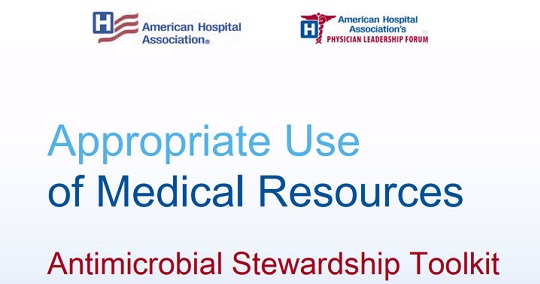 AHA Issues Antimicrobial Stewardship Toolkit for Hospitals & Patients
AHA Issues Antimicrobial Stewardship Toolkit for Hospitals & Patients
The American Hospital Association (AHA), along with six national partners, this week released a toolkit to help hospitals and health systems enhance their antimicrobial stewardship programs. The toolkit includes resources for hospital leaders, clinicians and patients, starting with a tool developed by the Centers for Disease Control and Prevention (CDC) to help hospitals assess their readiness for optimal antibiotic prescribing and use.
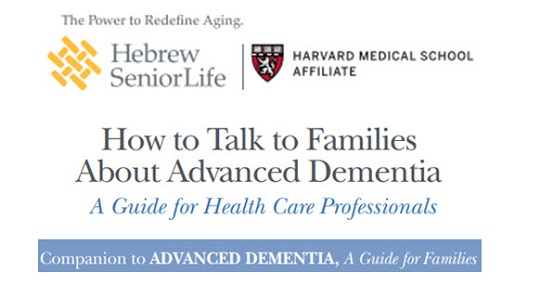 How to Talk to Families About Advanced Dementia, A Guide for Health Care Professionals.
How to Talk to Families About Advanced Dementia, A Guide for Health Care Professionals.
This training guide, a companion piece to the booklet "Advanced Dementia: A Guide for Families," is a user guide designed for healthcare providers who support families making treatment decisions for patients with advanced dementia. The booklet was created by an interdisciplinary team of Boston-based geriatric and palliative care physicians, nurses, and researchers from Hebrew SeniorLife(HSL) and Beth Israel Deaconess Medical Center in 2011.
 AHRQ Re-Engineered Discharge (RED) Toolkit
AHRQ Re-Engineered Discharge (RED) Toolkit
A variety of forces are pushing hospitals to improve their discharge processes to reduce readmissions. Researchers at the Boston University Medical Center (BUMC) developed and tested the Re-Engineered Discharge (RED). Research showed that the RED was effective at reducing readmissions and posthospital emergency department (ED) visits. The Agency for Healthcare Research and Quality contracted with BUMC to develop this toolkit to assist hospitals, particularly those that serve diverse populations, to replicate the RED.
 AHRQ Patient Safety Education and Training Catalog
AHRQ Patient Safety Education and Training Catalog
The Patient Safety Education and Training Catalog consists of 333 patient safety programs available in the United States as of November 28, 2011. Developed by the American Institutes for Research (AIR) from internet searches in 2010 and 2011, the catalog captures a snapshot of available programs at the time. Because new programs are continually being developed, old ones retired, and others revised and improved, interested readers should check the relevant website for up-to-date information.
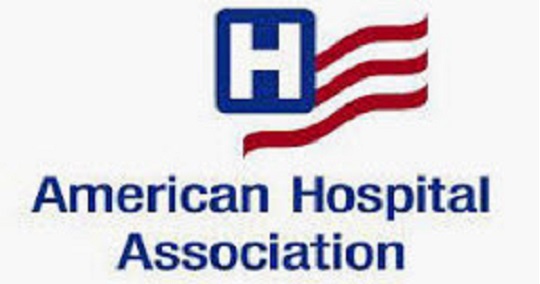 Hospitals in Pursuit of Excellence
Hospitals in Pursuit of Excellence
(HPOE) provides field-tested practices, tools, education and other networking resources to accelerate performance improvement in the nation's hospitals. HPOE's fundamental principles support the Institute of Medicine's Six Aims for Improvement- care that is Safe, Timely, Effective, Efficient, Equitable, and Patient-centered (STEEEP).
Creating a Culture of Safety - A Board Self-Assessment Tool
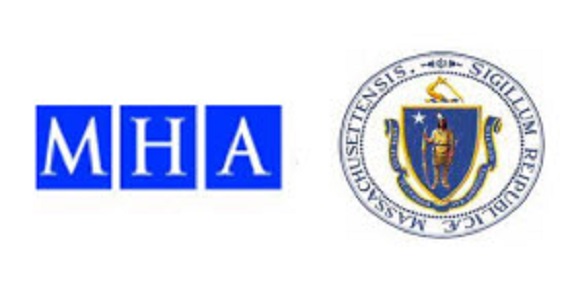 Leading on Quality and Safety: Briefing for Hospital Trustees
Leading on Quality and Safety: Briefing for Hospital Trustees
Presentation slide are now available from the event hosted by the Quality and Patient Safety Division of the Board of Registration in Medicine and the Massachusetts Hospital Association on June 3, 2013
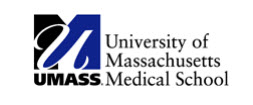 Free Technical Assistance for Implementing Tobacco Treatment Systems in Massachusetts Hospitals
Free Technical Assistance for Implementing Tobacco Treatment Systems in Massachusetts Hospitals
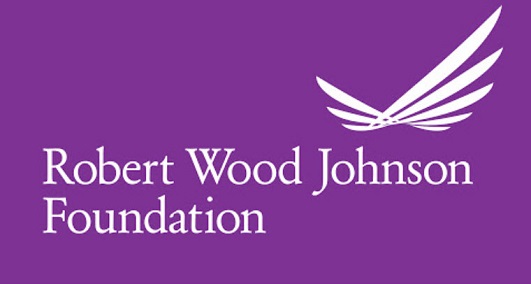 Robert Wood Johnson Foundation's (RWJF) Quality Report
Robert Wood Johnson Foundation's (RWJF) Quality Report
The RWJF's Quality Report is a quarterly e-magazine from RWJF's Quality/Equality program area featuring the latest journal articles, research reports and other publications, as well as updates from the Aligning Forces for Quality initiative, the Foundation's core strategy in its longstanding commitment to improve the quality of health care that Americans receive. Issues and links are archived below and updated when they are released. Read more....
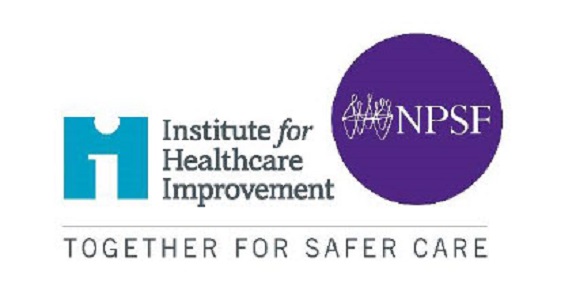
No Place Like Home: Advancing the Safety of Care in the Home
There truly is no place like home, and care in the home holds many potential benefits, including support for person-centered care. Care recipients generally prefer to be at home, where they may have more autonomy than in inpatient settings. Care in the home is not without its challenges, however, and these challenges may affect both care recipients and everyone who supports them. Existing data sug...» Full Article

